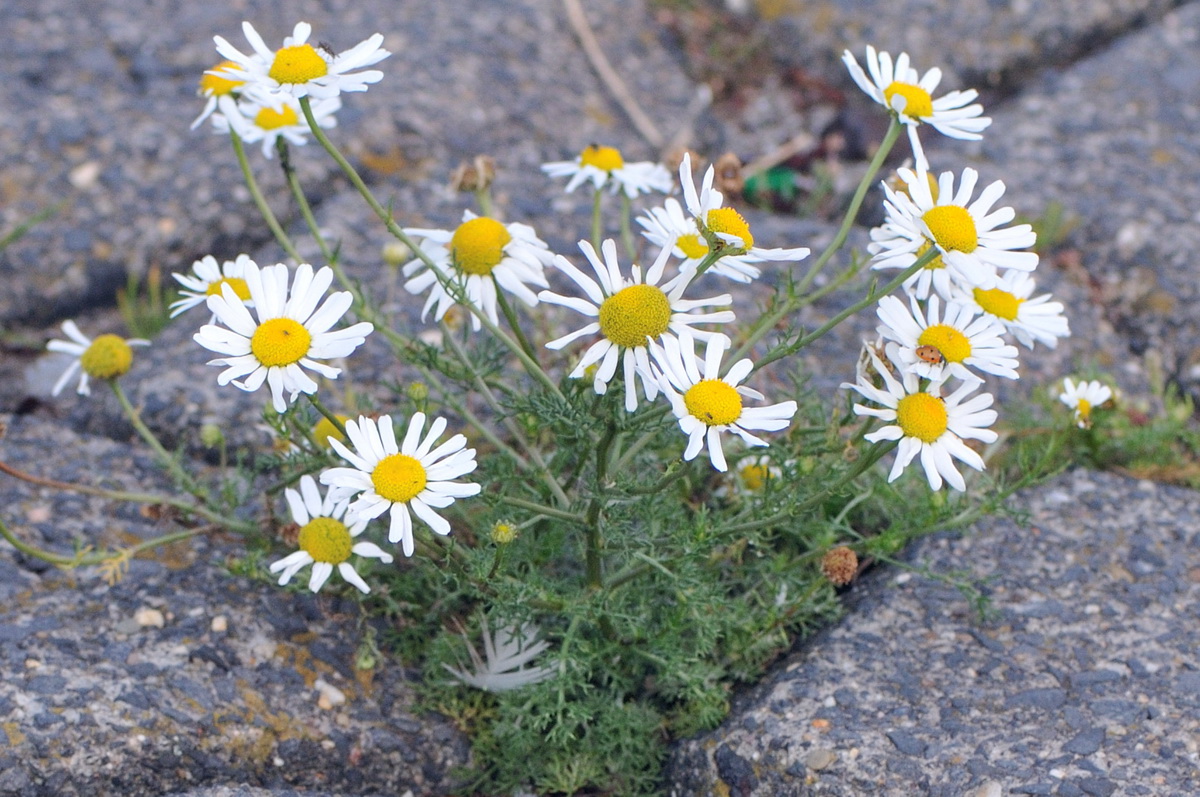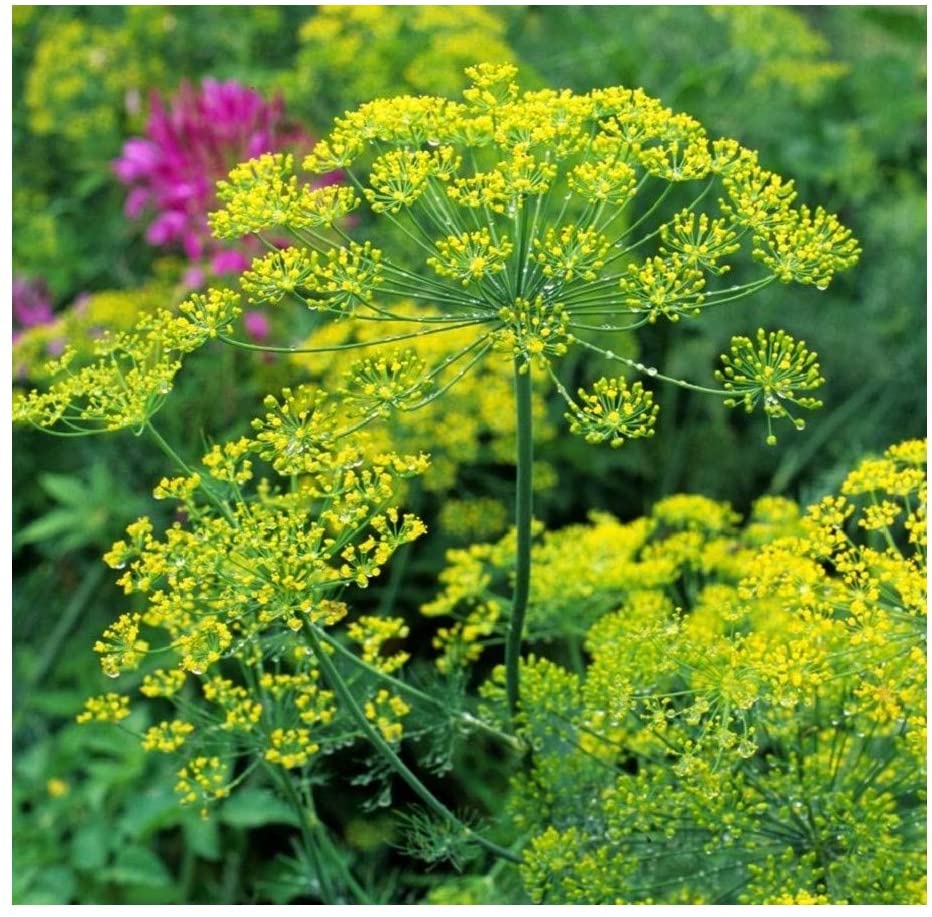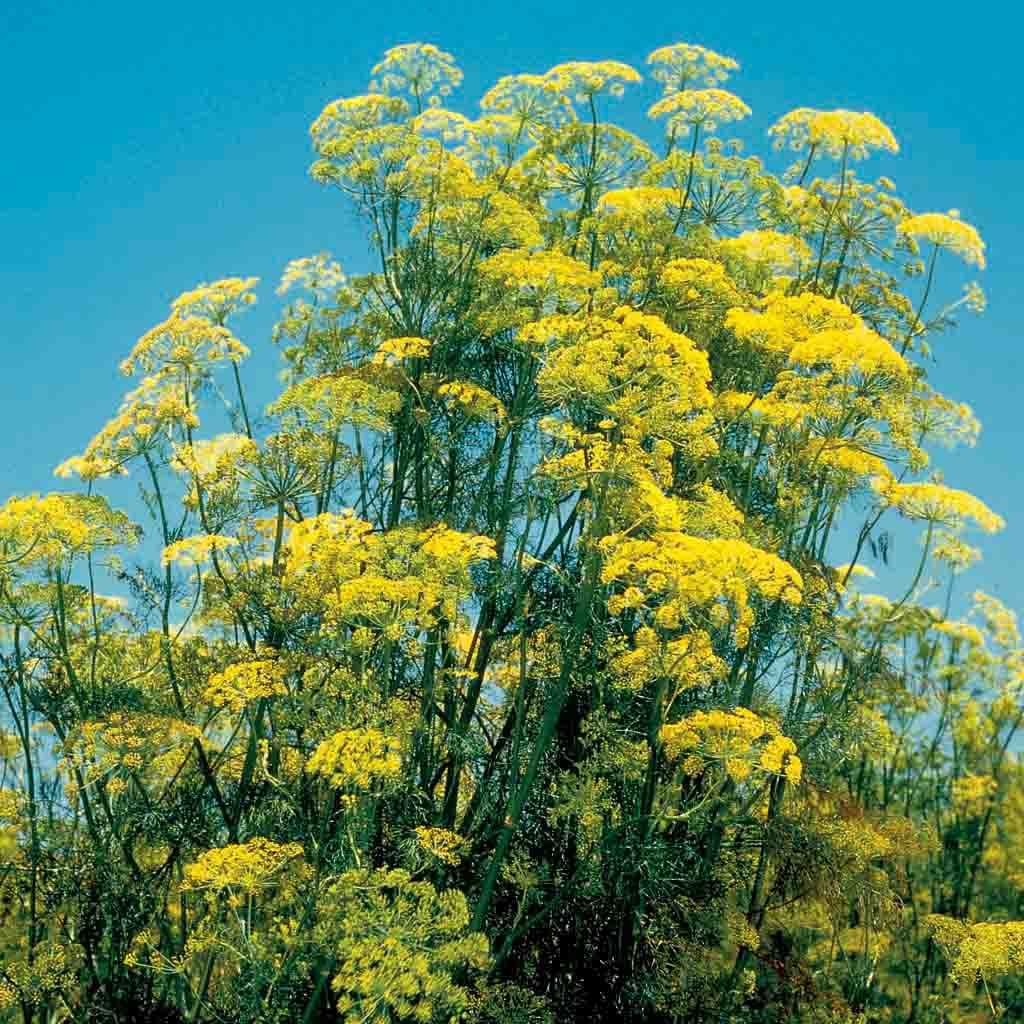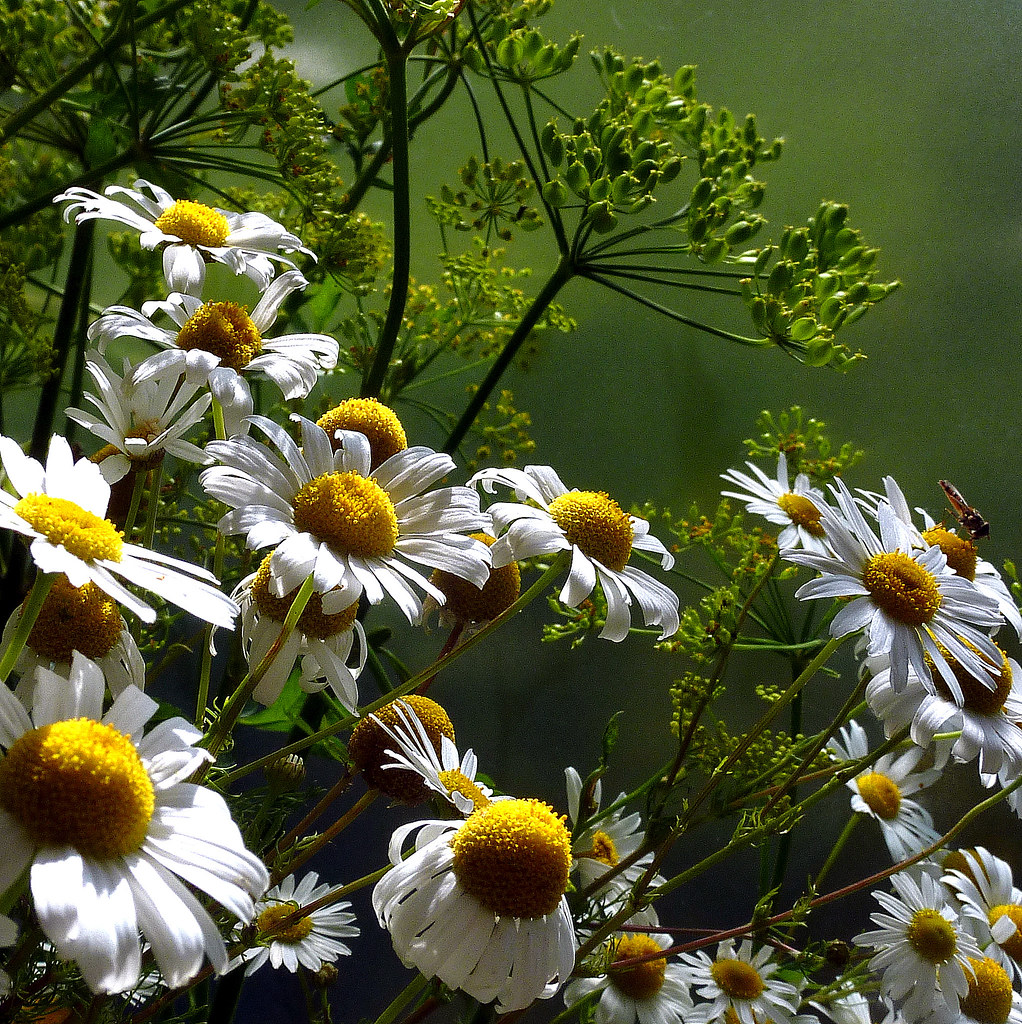
Dille of Anethum graveolens, Dille en kamille, Dill and Chamomile, Dill und Kamille, Aneth et Camomille, Eneldo y Manzanilla, Dill och Kamomill, Aneto e Camomilla, Koper i Rumianek, Укроп и ромашка
Dille staat voor “Heel zacht en teder maak ik dat het weer gaat stromen!”
Dille komt van oorsprong uit de landen rondom de Middellandse Zee. Waarschijnlijk hebben monniken het kruid door de rest van Europa verspreid. De naam dille komt van het Oudsaksische ‘dilarm’ wat ‘in slaap wiegen’ betekent. Dille stimuleert bij moeders die borstvoeding geven namelijk de melkklieren, waardoor kleine minimensjes met volle buikjes als een blok in slaap vallen.
Dille is een eenjarig, heerlijk geurend kruid. Wanneer je dille verspreid door de tuin zaait kan de geur van dit kruid overlast van bladluizen verminderen.
Dill (Anethum graveolens) is an annual herb in the celery family Apiaceae. It is the only species in the genus Anethum. Dill is grown widely in Eurasia, where its leaves and seeds are used as an herb or spice for flavouring food.
Dille (Anethum graveolens) is een plant uit de schermbloemenfamilie (Apiaceae). Uit dezelfde plantenfamilie komen venkel en kervel. Dille heeft fijne, naaldachtige bladeren. De vrucht is een tweedelige splitvrucht. Het is een kruid met een heel verfijnde smaak. Het is de enige soort in het geslacht Anethum.
Etymology
The word dill and its close relatives are found in most of the Germanic languages; its ultimate origin is unknown. The generic name Anethum is the Latin form of Greek ἄνῑσον / ἄνησον / ἄνηθον / ἄνητον, which meant both ‘dill’ and ‘anise‘. The form anīsum came to be used for anise, and anēthum for dill. The Latin word is the origin of dill’s names in the Western Romance languages (anet, aneldo, etc.), and also of the obsolete English anet. Most Slavic language names come from Proto-Slavic *koprъ, which developed from the PIE root *ku̯ə1po- ‘aroma, odor’. https://en.wikipedia.org/wiki/Dill
—————-
Beschreibung und Ökologie
HabitusDoppeldoldige BlütenständeAusschnitt eines doppeldoldigen BlütenstandesDöldchen mit Blüten im Detail
Vegetative Merkmale
Dill ist eine sommerannuelle, einjährige krautige Pflanze und erreicht Wuchshöhen von meist 30 bis 75 Zentimetern, selten bis zu 120 Zentimetern. Alle oberirdischen Pflanzenteile sind kahl und die Farbe variiert von Hellgrün bis Grün-Türkis. Alle Pflanzenteile duften stark aromatisch. Die Stängel wachsen aufrecht und verzweigen sich meist im oberen Abschnitt.
Besonders die unteren Laubblätter sind drei- bis vierfach fiederschnittig, fein zerteilt in borstliche Abschnitte. Die oberen Laubblätter sind weniger stark geteilt und kleiner. Nebenblätter fehlen. Die Blattscheiden haben eine Länge von 1 bis 2 Zentimetern und sind oben gehörnt.
Blütenstände, Blüten und Früchte
Die großen Blütenstände sind tragblattlose, 15- bis 30-strahlige Doppeldolden, selten bis zu 50-strahlig. Sie weisen einen Durchmesser von 5 bis 15 Zentimetern auf und enthalten zehn bis 25 Döldchen. Die Döldchen weisen einen Durchmesser von 3 bis 5 Zentimetern auf und enthalten 15 bis 25 Blüten. Die Blütenstiele sind 6 bis 10 Millimeter lang. Die kleinen Blüten sind radiärsymmetrisch und fünfzählig. Die fünf Kelchblätter sind verwachsen. Die fünf Kronblätter sind (dotter-)gelb. Es ist nur ein Kreis mit fünf Staubblättern vorhanden. Die Staubblätter sind länger als die eingerollten Kronblätter.
Zwei Fruchtblätter sind zu einem unterständigen Fruchtknoten verwachsen, der länglich und etwas zusammengedrückt geformt ist. Die zwei Griffel sind kurz. Die Blüte besitzt einen nektarabsondernden Diskus und wird von verschiedenen Insekten, besonders jedoch von Käfern bestäubt. Die Blütezeit reicht von teils schon Mai, jedoch meist Juni bis August.
Die eiförmigen, braunen, trockenen Spaltfrüchte (Doppelachänen) sind 3 bis 5 Millimeter lang, 1,8 bis 2,5 Millimeter breit und 0,6 bis 0,8 Millimeter dick. Die Tausendkornmasse liegt zwischen 1 und 2 g. Sie zerfallen in zwei schmal geflügelte Teilfrüchtchen mit grau-weißen Längsrippen. Die Früchte reifen meist zwischen Juli und September. Als Flügelflieger werden sie über den Wind ausgebreitet, ferner bei Nässe auch als Adhäsionshafter. https://de.wikipedia.org/wiki/Dill_(Pflanze)


Matricaria chamomilla (synonym: Matricaria recutita), commonly known as chamomile (also spelled camomile), German chamomile, Hungarian chamomile (kamilla), wild chamomile, blue chamomile, or scented mayweed, is an annual plant of the composite family Asteraceae. Commonly, the name M. recutita is applied to the most popular source of the herbal product chamomile, although other species are also used as chamomile. Chamomile is known mostly for its use against gastrointestinal problems; additionally, it can be used to treat irritation of the skin.
Description
Main article: Asteraceae Flowers of M. recutita:
A. Yellow disc florets
B. White ray floretsChamomile
Matricaria chamomilla is a member of the Asteraceae family, native to southern and eastern Europe. Today the plant can be found on all continents. It has a branched, erect and smooth stem, which grows to a height of 15–60 cm (6–23.5 in). The long and narrow leaves are bipinnate or tripinnate. The flowers are borne in paniculate flower heads (capitula). The white ray florets are furnished with a ligule, while the disc florets are yellow. The hollow receptacle is swollen and lacks scales. This property distinguishes German chamomile from corn chamomile (Anthemis arvensis), which has a receptacle with scales. The flowers bloom in early to midsummer, and have a strong, aromatic smell.
The flowers contain a blue essential oil, what gives it the characteristic smell and interesting properties. This colour characteristic of the oil, attributable to the chamazulene it contains, explains why the plant is also known by the common name Blue Chamomile. The fruit is a yellowish-brown achene.
Etymology
The word chamomile comes from the Greek χαμαίμηλον (chamaimēlon) meaning “earth-apple”, which is derived from χαμαί (chamai) meaning “on the ground” and μήλον (mēlon) meaning “apple”. It is so called because of the apple-like scent of the plant.
In Latin, one of the meanings of matrix is womb; the name Matricaria was given to the genus because Matricaria chamomilla was widely used to treat such gynecologic complaints as menstrual cramps and sleep disorders related to premenstrual syndrome. The plant has been found to contain fairly strong antispasmodic and anti-inflammatory constituents and is particularly effective in treating stomach and intestinal cramps. https://en.wikipedia.org/wiki/Matricaria_chamomilla

